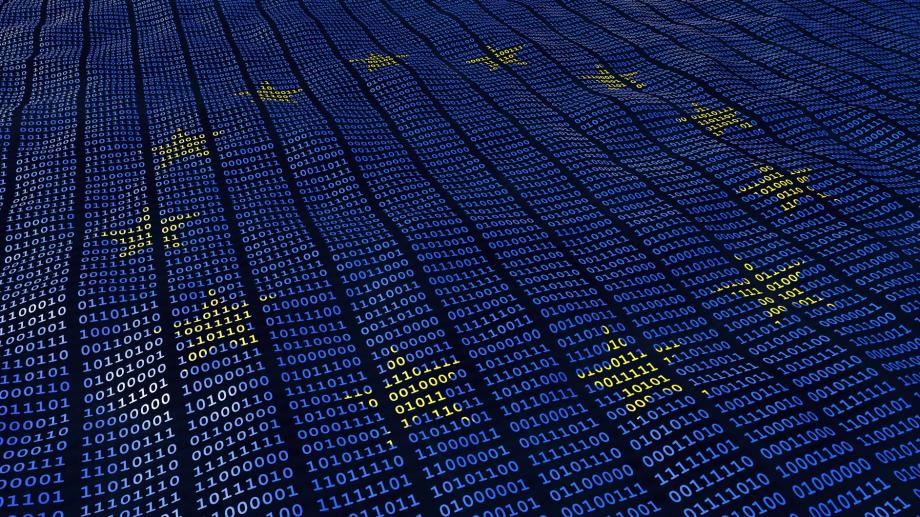EU’s digital vision in the era of dataism

The talk of the digital future is immensely in vogue. However, the future is already here. Nothing reveals and increases our reliance on a virtual connection for work, education, business, and social life more than the current pandemic, writes Miroslava Sawiris.
Miroslava Sawiris is a Research Fellow at the GLOBSEC Policy Institute.
The era of dataism is here
Harari describes this digital era as a new ground-breaking paradigm shift, defined by the new ideology of dataism which has the potential to replace humanism and its worship of the individual with the ‘information flow’ as the ultimate goal to which all other activities, efforts and desires will become subservient.
While we can philosophise about whether this new ideology has the potential to eventually replace individual at the top of the hierarchy of existence with inorganic AI or whether such ideas are just an expression of belief in determinism as preached by radical behaviourists such as B. F. Skinner, EU envisions a different model, one where big data and AI co-exist in symbiosis with liberal democratic values.
First steps to define European digital space
The initiative embodied in the self-regulatory Code of Practice on Disinformation (CoP) and GDPR represents the first European attempt to address persistent deficiencies associated with lawless digital space.
Among these are super-efficient influence operations reaching millions of citizens across the EU, degradation of public discourse through online lynching and normalisation of hate speech, undermining the integrity of electoral processes as well as what seems to be a never-ending stream of private data leaks and abuses.
The current pre-5G iteration of the internet is a far cry from the once idealistically envisaged virtual space which would supposedly empower individuals across the globe. Sure, it can bring countless opportunities, but also, countless risks.
CoP, along with GDPR, has many critics, particularly among those who believe that just like the invisible hand of the market, the invisible streams of information should not be interfered into by human agency regardless of consequences for billions of online users, institutions and states.
This dogma, of course, neglects the fact that even the markets and data flows are human inventions, facilitated by common agreements and standardisation, i.e., regulation. The question is thus not whether to regulate at all, but how?
From this perspective, CoP and GDPR are leading European efforts to bring online information space in line with principles and values based on liberal democracy by requiring social media platforms, tech giants and online businesses to begin to acknowledge their responsibility in shaping the information space and by redressing power asymmetries between users and service providers.
These first frameworks outline initial partial answers to the important questions, such as ‘what do we want the new information space to look like’? What functions do we expect it to fulfil and more importantly, who should it work for?
Answers to these questions are not given or inevitable – even choosing no frameworks to adhere to, represents a specific choice that will result in a particular model.
Ambitious plans
EC’s Europe fit for the digital age strategy is built on the three pillars: technology for people, competitive economy, and democratic society, while internationally the strategy aims to utilise European regulatory and technological capabilities to promote the European approach globally.
Part of this ambition is to lead ‘the standardisation process of the new generation of technology: blockchain, supercomputing, quantum technologies, algorithms and tools to allow data sharing and data usage.’
Perhaps the most interesting policy development in this area so far is the EC’s White Paper on AI published in February 2020, proposing human-centric development of AI and planning its fast deployment in areas such as health care, farming or climate change mitigation. The paper also outlines a common European regulatory framework for AI.
Building blocks of EU’s digital strategy certainly do not lack ambition with impressive plans such as to ‘attract over €20 billion of total investment in the EU per year in AI over the next decade’ in order to create a counterbalance to Silicon Valley or become a big player in the standardisation game, the new battlefield ‘in the geopolitical contest over the cyber and information space‘.
Reality check
So far, Chinese companies such as Huawei and ZTE have been most successful in this competition, where winners will decide not only ‘whose technology is used but also how it is used’ according to ASD’s Lindsey Gorman.
However, it remains to be seen as an enormous and slow bureaucratic machine consisting of interlinked European institutions. Democratic, as well as backsliding member states with fragmented interests, can square the need for agile and flexible solutions and legislative frameworks which may become obsolete by the time they are implemented.
The COVID-19 pandemic poses an even bigger threat to this grand vision, as it depletes European resources, hinders cooperation and technological progress, creates a window of opportunity for leaders with authoritarian tendencies and triggers a global economic crisis. That is not to say that the EU should not aim high.
In the meantime, however, even less ambitious undertakings – such as a clearly defined framework for increased responsibility, transparency and accountability of digital platforms operating in each European market as embodied in either new iteration of the Voluntary Code of Practice or perhaps, the upcoming Digital Services Act, will be highly anticipated.
This article was originally published on Euractiv.com on 24 April 2020

Senior Research Fellow, Centre for Democracy & Resilience